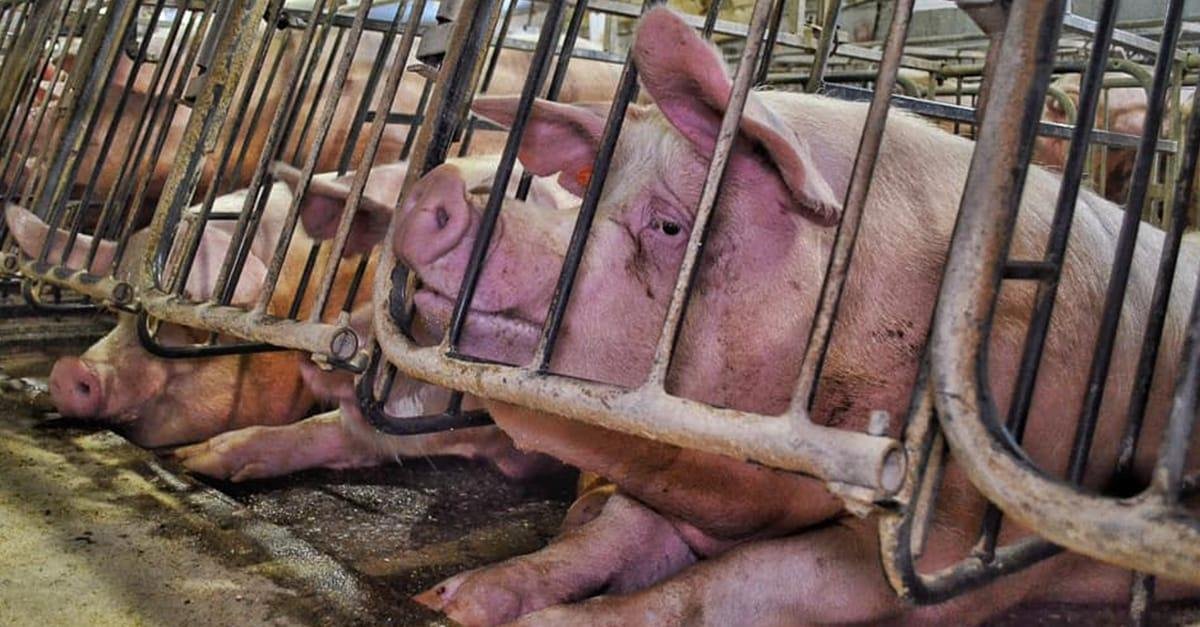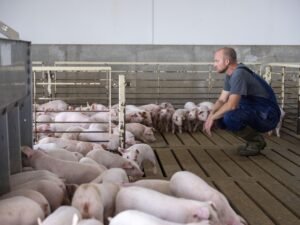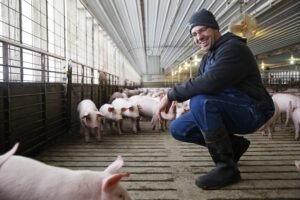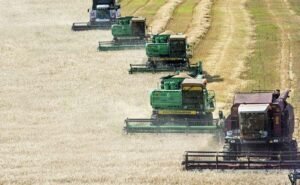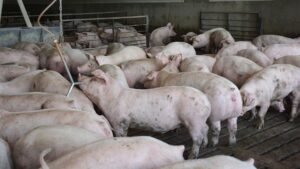A new storm has swept through the pig farming industry. Video footage emerging in the last month from facilities in Germany, Britain, and the United States has cast shadowy doubts on animal welfare standards previously thought to be robust enough. Suddenly, long-standing practices—some assumed routine—are under intense examination from advocates and regulatory bodies alike. The boundaries of “acceptable treatment” seem fluid now; even for seasoned industry observers, these events were not precisely predictable.
Undercover Investigations: A Series of Alarming Discoveries
Last week, covert investigators unveiled graphic images depicting Northmoor Farm workers at a leading UK pork supplier engaging in what campaigners describe as flagrant breaches of law and ethics. Employees were filmed clutching piglets by their hind legs and slamming them onto concrete—a technique colloquially dubbed ‘piglet thumping,’ despite its official prohibition in British agriculture. Supermarkets including Asda, Morrisons, Tesco and Sainsbury’s quickly distanced themselves from Northmoor by suspending supply contracts within hours of the footage appearing online.
Across the North Sea in Germany—and months earlier—veterinary reports detailed another tableau: sows confined to ‘farrowing crates’ for five weeks at a stretch with barely an arm’s width between bars to shift position. Severe abrasions festered untreated on flanks after pigs jostled uselessly against metal railings day after day. Routine tail amputation occurred shortly after birth; apparently at odds with both European Union regulations and basic husbandry principles.
When CEOs claim business ethics are inviolable while profits report sharp rises in tandem with exposed welfare failures—in fact Cranswick plc recorded a 14.6% jump in pre-tax profit this season—the dialectic between public image management and ground-floor reality looks tilted askew.
Complex Motivations: Legal Action Meets Consumer Disquiet
Though some insist incidents like these reflect just outliers—rare behavioral deviations rather than evidence of systemic apathy—the aggregate data feels less forgiving each year. Activists insist such abuse is no longer explainable as negligence or lack of training; deliberate harm seems woven into daily custom now according to legal experts like Drs. Preuß-Ueberschär & Weins. Companies such as Cranswick have attempted damage limitation through rapid suspension of implicated farms alongside commissioning independent veterinary reviews into existing operations—even though sales figures concurrently show unforeseen growth during scandal periods.
“Enforcement without delay,” demands Animal Justice Project founder Claire Palmer—for whom reciting best practices is insufficient if legal bans lack teeth when breached openly on tape right under inspection regimes’ noses.
This swirl raises an inconvenient query: While regulators debate stronger guidelines or outright legislative phase-out proposals—as Palmer did recently—is there consensus among policy actors about what constitutes sustainable reform for pig farming? Or must consumers shoulder greater moral weight by favoring plant-based options?
Behind Closed Doors: Everyday Realities That Elicit Outrage
Commonplace routines within modern intensive systems frequently generate more criticism than comfort lately. Not so rarely anymore do cameras reveal employees administering unnecessary violence out of impatience or stress instead of technical necessity; gestation crate use remains common even where profitable alternatives exist but require capital renewal many producers avoid altogether.
At one Kansas breeding facility recently scrutinized stateside, shocking details came up unexpectedly: foaming mouths, wounds splitting open along rusted bars—that sight would turn even stalwart stockmen’s stomachs if encountered firsthand rather than viewed upon filtered social media feeds afterward. Perhaps some questions ought arise regarding why such footage only comes forward via undercover operatives rather than frank internal reporting mechanisms.
Looking further back—not everybody agrees that zero-animal agriculture is feasible soon despite heightened advocacy efforts both sides of the Atlantic Ocean suggest otherwise sometimes for rhetorical effect but consumers still eat bacon sandwiches at greasy spoons every morning without visible pause.
Consumer Trust Versus Corporate Reality
Trust proves fragile within food chains hiding lengthy links from barnyard confines to supermarket aisles brimming bright packaging promising “high welfare” yet concealing tricky truths beneath simple slogans. Retailers might brandish new policies overnight (after public exposures), while actual compliance remains uneven across disparate supply partners who vary widely in interpretation—and enforcement habits—of external certifications like Red Tractor labeling schemes cited misleadingly per campaigners’ claims.
Meanwhile competitors eager for market share occasionally trumpet their own ethical superiority during crises belonging originally to rivals—not always mentioning comparable oversight lapses elsewhere nor acknowledging shared systemic vulnerabilities omnipresent throughout factory farming worldwide.
Once bitten twice shy rings true here; swift decline peels away consumer confidence quicker than pork belly roasts vanish beside Yorkshire puddings during Sunday lunch crowd surges (though sometimes only mild shifts occur depending which scandal breaks where).
Food systems transform slowly except when they don’t—it depends who you ask around Greenwich meantime or Berlin rush hour alike these days because momentum flows unexpectedly amid controversy-driven reforms never surfacing neat chronological order desired for clarity’s sake.
That said, follow-up investigations may yield insignificant findings next quarter—or something far more destabilizing should whistleblowers persistently rattle cages few dare peek inside until forced by accident or intent much later down line.Wearing many hats seems advisable when tracing accountability threads through contemporary agribusiness labyrinths since direction isn’t always straightforward nor resolution inevitable before appetite returns anew regardless external verdicts rendered publicly last week alone.

